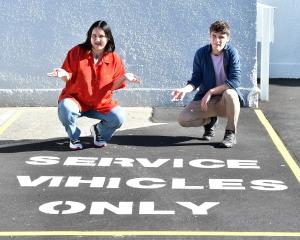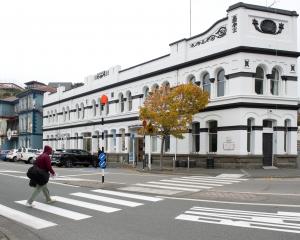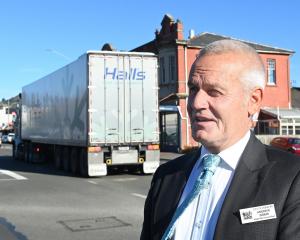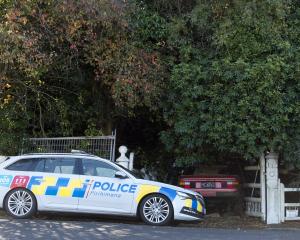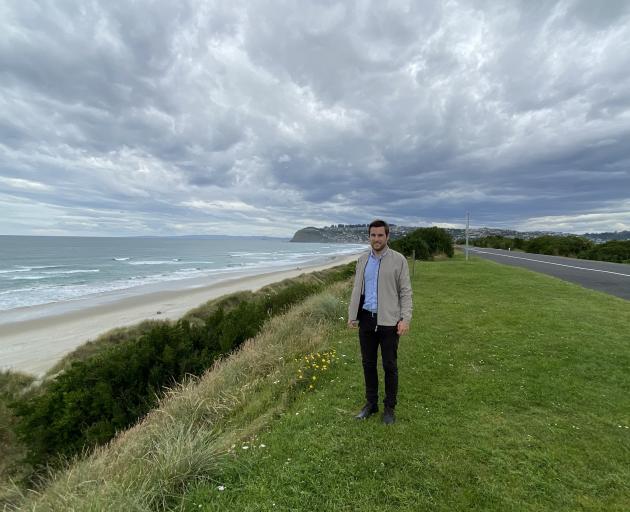
In the past year, Dunedin City Council 3 Waters coastal specialist Tom Simons-Smith and a team of specialist consultants have gathered feedback from across the community on three sections of the coast - St Clair Beach, Middle Beach and St Kilda Beach.
"We want to understand what people love about these areas, and what they are concerned about, so we can use these different values to consider future management options for the coastline," Mr Simons-Smith said.
The council is working with the Otakou Runanga and the wider community to create a vision and long-term plan for the coast, in the face of climate change and sea level rise.
Finding out what the community truly valued about the area helped the team to identify options that, over time, would solve multiple issues, build resilience and create new opportunities for recreation and environmental benefits along the coast.
Public feedback generally involved two major themes — the environment and sustainability; and access and connectivity.
"A lot of people perceive this coastline as being natural, when in fact is it actually highly modified," Mr Simons-Smith said.
"There has been a real history of challenging management at St Clair.
"Many people also highlighted the need for safer and better access on to the beach, particularly down at the St Kilda end where the dunes are so high."
Respondents had also expressed concern about the former landfill at Kettle Park, the St Clair seawall and sand retention.
Mr Simons-Smith said the team had been working on recommendations for managing different parts of the coastline better and more sustainably over the next 50 years.
These recommendations would be included in the draft coastal plan, to be released in late February for public consultation.
"We will be sharing our recommended pathways and visualisations, and also some illustrations so people can get a good understanding of the concepts.
"People should expect some interesting ideas - we are excited to share our thinking."
The draft coastal plan came under the umbrella of the South Dunedin Futures project, which aimed to make "the flat" (the southern areas of the city at sea level) more resilient to climate change.
"As South Dunedin used to be a wetland, and the city’s forefathers modified it to push the beach back, we shouldn’t be surprised that we have challenges in managing the coastline."
Comments
If it ain't broke, there is no need to fix it. This article sounds like justification for the DCC's increase in our rates because.... for all those 'green' consultants and employees required to save us from sinking into the sea. Show me independent evidence (not an academic study) that it has happened first before we employ these people. A simple photograph of sea/harbour levels from a 100 years to now would suffice. The 'greening' of our city is hurting many financially, let alone destroying its centre and ability to work near it. DCC- keep doing what you are doing, and the most of George St will look like Princes St.
The Dutch have managed to sort the problem out for the past few hundred years - maybe we could learn something from them. Similarly, the Victorians did a good job with many parts of the eroding east coast of Britain. Then we look at the total incompetence that gave us the new sea wall at St Clair and I can see why we should be worried!
This sea level rise situation has me a little confused. Can someone, anyone, please explain the simple maths of displacement and thermal expansion versus area. Displacement in terms of ice melt and termal expansion in terms of sea water increase in temperature over the entire area of the planet.
To my way of thinking, if all the ice melted, how much would the worlds oceans rise? And surely, if temperatures reached that stage, wouldn't we have more to worry about than coastal flooding of low laying areas? Huge damaging storms? Weather cycles changed irreversably? All this climate change/sea level rise talk is sounding very much like a money making scaremongering theme. Yes, we could do a lot more to preserve and recycle our resourses, we are far too wasteful, our capitalist system and slick marketing is responsible for that.
But what is the truth regarding serious sea level rise?
Finally, if indeed we are under threat, why, as David has suggested, haven't we poured our money and our best efforts into the proven methods of defence.....dykes and such like?
The information is freely available online. Just try and avoid the conspiracy theories and look at the science based facts. And I agree, sea level rise is just one of the many disastrous consequences of global warming. I believe that the climate crisis, like the pandemic and biodiversity crisis are global problems that need global solutions. The threat of sea level rise to South Dunedin relatively speaking are probably inconsequential compared to the potential global impact on humanity as a whole.
Scientists who study climate tipping points have found that “we might already have crossed the threshold for a cascade of inter-related tipping points,” that would begin taking the Earth to a far hotter state. The researchers concluded that of the 15 potential tipping points they identified in 2008, seven now show signs of being active, meaning they may have already tipped into self-reinforcing and irreversible change. That is along with two new ones they have added to their list (Lenton, et al, 2019). With nine tipping points in total already active and inter-relating, ‘runaway’ change is a reasonable term to use. New models are projecting that on current emissions pathways we
are headed for over 6 degrees of warming by the end of the century (Johnson, 2019).
The politically permissible scientific consensus is that we need to stay beneath 2 degrees
warming of global ambient temperatures, to avoid dangerous and uncontrollable levels of climate change, with impacts such as mass starvation, disease, flooding, storm destruction, forced migration and war. Ecosystems will be lost. Disruptive impacts from climate change are now inevitable. - Jem Bendell
Thanks for your input there Pat.







